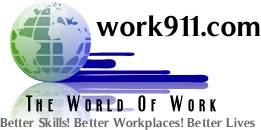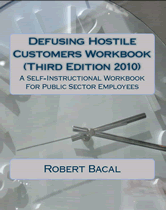
Improving Communication -- Tips For Managers
Many if not most of take effective communication for granted, but the truth is that often times, managers don't pay enough attention to improving communication within the organization, and improving their own communication. There's huge potential payoff for better communication, both for the bottom line, and for the mental sanity of everyone.
Research indicates that managers spend somewhere between 50% - 80% of their total time communicating in one way or the other. This isn't surprising, since communication is so critical to everything that goes on in an organization. Without effective communication there can be little or no performance management, innovation, understanding of clients, coordination of effort, AND, without effective communication it is difficult to manage the expectations of those who are in a position to make decisions about your fate.
It can also be said that many managers do not communicate well, and do not set an organizational climate where communication within the organization is managed effectively. This isn't surprising, since a manager who communicates ineffectively and does not encourage effective organizational communication is unlikely to hear about it. Poor communication is self-sustaining, because it eliminates an important "feedback loop". Staff are loathe to "communicate" their concerns about communication because they do not perceive the manager as receptive. Both staff and management play out a little dance.
In short, you may be fostering poor communication, and never know it. You may see the symptoms, but unless you are looking carefully, you may not identify your own involvement in the problem. What can you do about it?
Your Role In Communication Improvement
Effective organizational communication, regardless of form, requires three things.
First, all players must have the appropriate skills and understanding to communicate well. Communication is not a simple process, and many people simply do not have the required depth of understanding of communication issues.
Second, effective organizational communication requires a climate or culture that supports effective communication. More specifically, this climate involves trust, openness, reinforcement of good communication practices, and shared responsibility for making communication effective.
Third, effective communication requires attention. It doesn't just happen, but develops as a result of an intentional effort on the part of management and staff. Too often, communication, whether it is good or bad, is taken for granted.
We can define your role in improving communication with respect to each of these. First, if you want to improve communication, you will need to ensure that you and staff have the skills and knowledge necessary to communicate effectively. This may mean formal training is in order, or it may mean that you coach staff and provide feedback so that they can improve.
Second, you play a critical role in fostering and nurturing a climate that is characterized by open communication. Without this climate, all the skills in the world will be wasted.
Finally, you must bring communication to the forefront of organization attention. If you make the effort to improve communication, your staff will recognize that it is important. If you ignore it, so will staff.
Some Specific Tips:
1) Actively solicit feedback about your own communication, and communication within the organization. Ask staff questions like:
- When we talk, are you generally clear about what I am saying?
- Do you think we communicate well around here?
- Have you got any ideas about how we could communicate better?
Consider including these questions (or similar ones) in your performance management process, or staff meetings.
2) Assess your own communication knowledge and understanding
(See self-assessment instrument on Page 5-sorry, not available online).
3) Working with your staff, define how you should communicate in the organization. Develop consensus regarding:
- a) How disagreements should be handled.
- b) How horizontal communication should work (staff to staff).
- c) How vertical communication should work (manager to staff, staff to manager).
- d) What information should be available and when.
Once consensus is reached, support the achievement of these goals through positive reinforcement and coaching.
4) Look at the impact of the structure of your organization and how it impacts on communication. Indirect communication (communication that is transferred from person to person) is notorious for causing problems. Look at increasing direct communication where the person with the message to send does it directly with the receiver.
5) Learn about, and use active listening techniques. This will set a tone and contribute to a positive communication climate. If you don't know what active listening is, find out. It's important.
6) Consider undertaking a communications audit. (see sidebar).
Conclusion
We only have space to give you a few tips, and communication is a very complex process. We suggest that you take the communication self-assessment checklist on the following page, to assess your own understanding and application of communication principles.
If you would like to increase awareness and attention to communication, consider copying the self-assessment checklist and distribute it to staff.
Suggest that they complete it for their own use, and follow it up by discussing organizational communication in a staff meeting.
Be aware that exploring communication patterns and effectiveness can bring to the surface a number of resentments and perceptions. If you aren't prepared to deal with these, it is best to look to an outside consultant.





